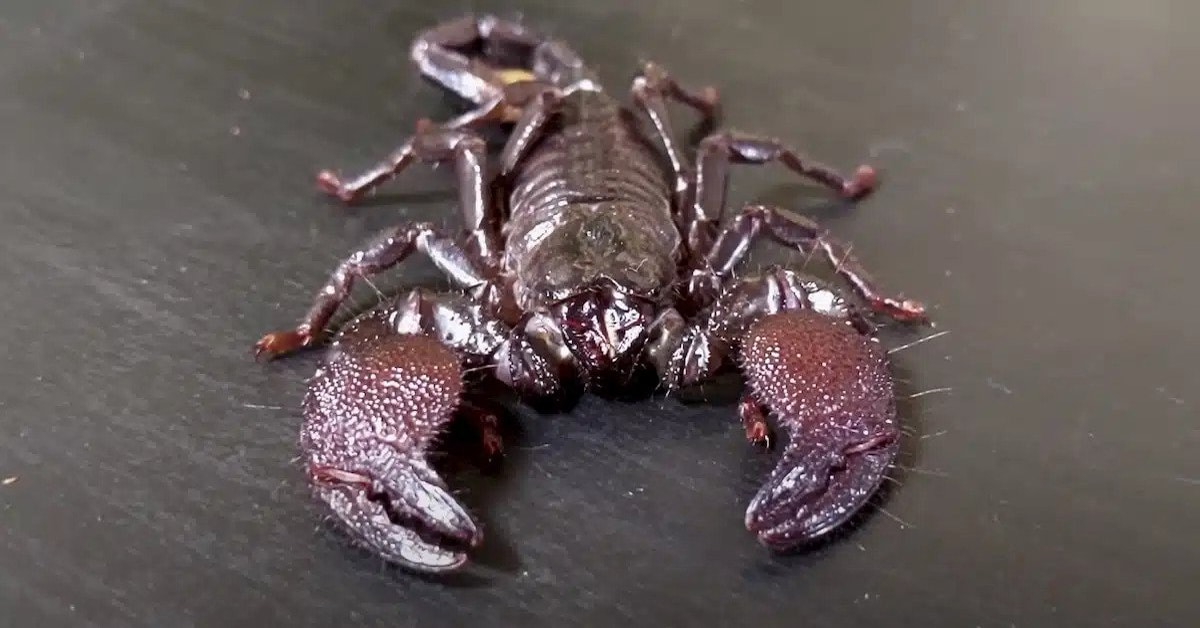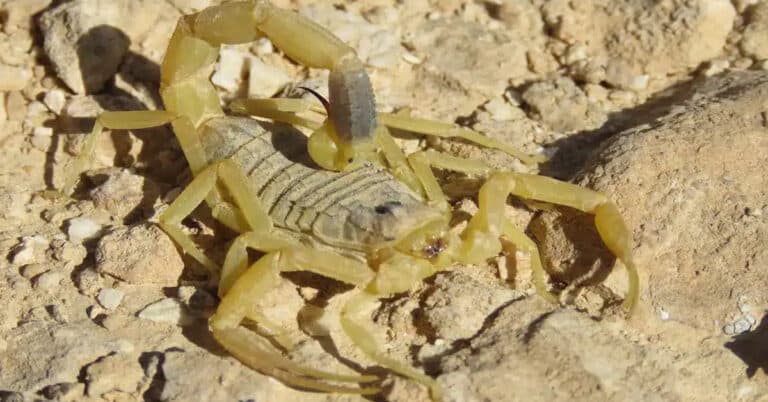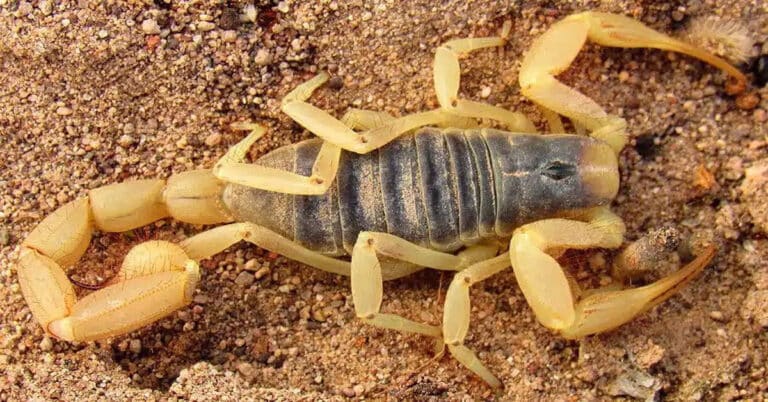Emperor Scorpions: Everything You Need To Know
Scorpions are one of the worlds oldest animals, the first of their species evolving around 460 million years ago. The most recognizable genus, to most humans, are emperor scorpions. Continue reading to learn all about them!
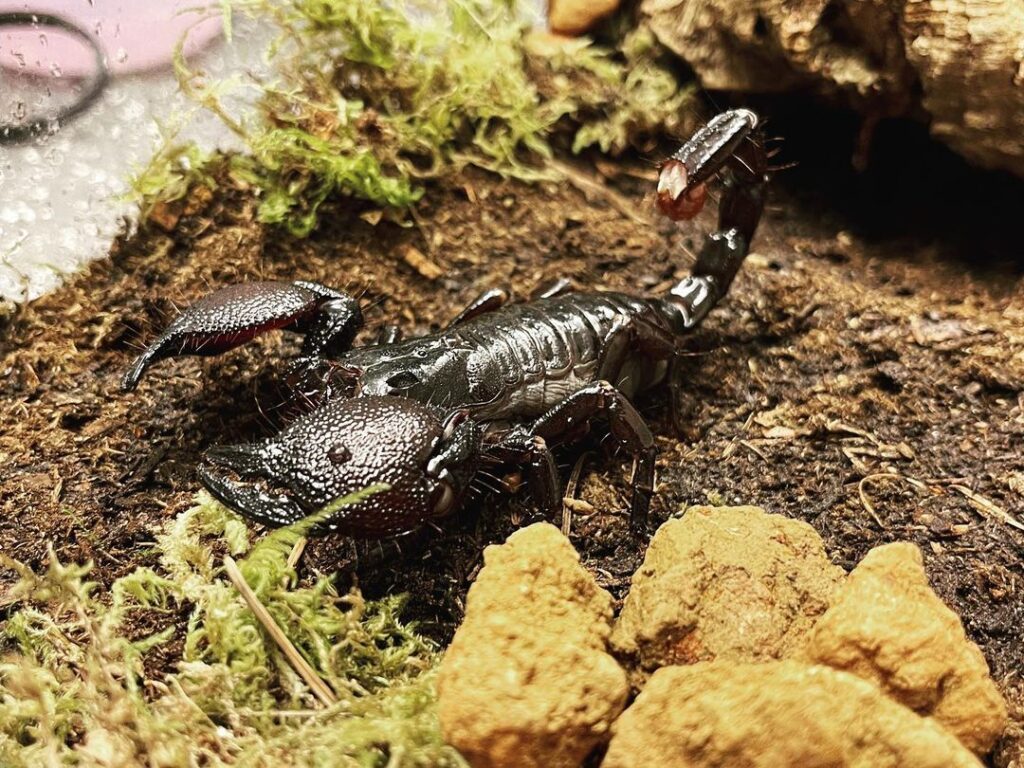
The History of Scorpions
Scorpions evolved in water, some having a telson (stinger), and others not possessing a telson. Eventually, less than 20 million years later, scorpions became the first known animal to venture out of the water and make their homes on land.
They’re also thought to be the oldest land animal in the world.
Scorpions were able to do this because they can reserve oxygen in their cells for extended periods of time.
This would be the reason they can live in radioactive climates without suffering any ill affects, and it’s also the reason they can still to this day remain alive under water for up to two days.
Scorpions were quite sizeable when they first came around, the smallest of which reaching over a meter in length, unlike the sub-seven inch specimens we see today. Some have even been recorded at over eight feet in length.
These are truly special, extraordinary creatures that have been incredibly successful throughout their near-500 million year reign on this Earth. They’re perhaps the most successful animal species of all-time.
Scorpions are found on every continent aside from Antarctica, making them one of the widest-distributed animals in the world.
Emperor Scorpions
Perhaps the most popular of this species, as mentioned above, is the Emperor Scorpion, a black forest scorpion native to Central Africa.
This is the most common scorpion people keep as pets, and for a good reason.
Emperor scorpions are the species you see at most pet stores. They’re easy to take care of, they’re relatively docile compared to most other species (each one is of course an individual), and their venom is far milder than most others of its kind, no more potent than an average bee sting.
Their claws however are quite sizeable compared to other species, so you still want to steer clear of upsetting them; even specimens with smaller claws are deceptively strong.
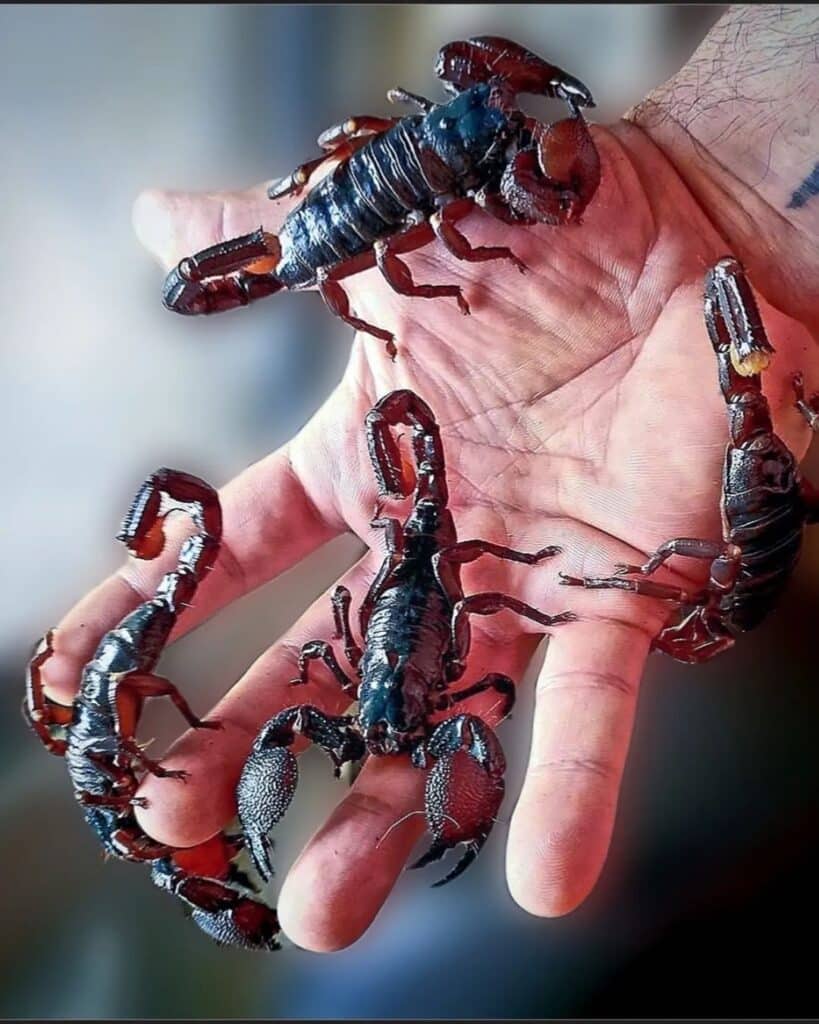
Venom
There are roughly 1,800-to-2,000 species of scorpions around the globe, though only about 25 of which possess a venom potent enough to kill a human.
And yes, all scorpions are venomous.
More often than not, scorpions are not dangerous to humans. But, if you were to die from a sting, you wouldn’t be the first.
That’s one thing that appeals to pet owners when regarding Emperor scorpions, they’re much less dangerous than merely all of their cousins.
They will generally lie and wait for pray to walk into their striking range, sensing the vibrations around them as they cannot see very well.
Once the opportunity arises, they’ll clamp down on the pray with their wickedly strong claws, before delivering a sting full of their venom.
Sometimes with emperor scorpions however, they’ll simply catch pray in their claws and eat the insect without stinging them. It can vary depending on what they catch.
Feeding & Diet
Most any scorpions feed mainly on ground-dwelling insects, such as crickets, grasshoppers, roaches of any kind, a wide variety of worms, such as waxworms, mealworms, superworms, and many others.
Some will even eat small lizards and rodents at times.
Dubia roaches may be the best feeders for these arachnids in captivity, as they have a high nutritional content, and they’ll remain alive until the scorpion ends up killing, and eating them.
Worms often times burrow themselves into the substrate, later turning into black beetles that co-habit the scorpions home you’ve created.
This isn’t an issue, it can even add to your pets enclosure. But the scorpion will not eat them once they’ve turned into beetles, as beetle exoskeletons are too hard for them to chew and pierce.
Crickets also die on their own within a day or two, they are not the hardiest insects out there. If this happens, you should take the dead insect out of their habitat, as it can bring mites to your emperor scorpions enclosure.
It’s a good idea to diversify their diet as much as possible, and they’re generally not too picky, being quite opportunistic hunters.
It’s important if you’re keeping a scorpion as a pet to feed them only captive bred insects, as wild caught pray may be infested with parasites that can easily transfer to your eight-legged, two-clawed assassin.
Sometimes emperor scorpions, as mentioned above, will begin eating their pray without stinging it, which is interesting. No scorpions truly need to sting their pray, their claws are strong enough to simply hold the insect in place.
However, they will often times deliver a sting in order to either defend themselves, or simply make their pray easier to hang onto.
You can feed adults anywhere from once or twice a week to once every several weeks. It’s not advised to feed them rarely. But, should you go on vacation or forget to feed them for weeks on end, your scorpion will most likely remain alive and even still be considered healthy.
Just don’t make a habit of it.
Scorpions dissect their pray with chelicerae, which come in two pairs of mouthpart appendages. They use these to chew up their food, and to some, it can be quite unnerving to witness.
To others, there isn’t a cooler thing to watch in the animal kingdom.
Regarding their diet, it’s also important to keep feeding them worms to a minimum, as they contain a lot of fat.
If your scorpion gets too fat, it may be difficult for them to later climb out of their faces when they molt. But, if you have a scorpion that is looking a little thin, worms of most kinds may be the perfect feeder for them.
Molting
Scorpions, like other arachnids, molt their exoskeletons as they grow.
This involves shedding their hard layer of skin in order to grow bigger.
They will generally not feed for a week or so leading up, and they also neglect to feed immediately following, as their new skin is quite soft for a few days following.
So, if you have a scorpion that appears to be dead or not moving, it may just be in the process of molting. You will generally know within 24 hours, as it doesn’t take too awfully long for them to complete their molts.
If they’re having a hard time molting, be sure to spray the enclosure with water, as the humidity will help them climb out.
Emperor Scorpion Care
Caring for your emperor scorpion comes at a low cost, which is great for exotic animal lovers.
Once purchasing your scorpion, which could cost you anywhere from $30 to $75, all you’ll need is a 10 gallon tank (you can go bigger if you like), substrate, a hide or multiple hides, plants, and water.
A heating pad isn’t generally required, most scorpion species will do well at room temperature, but it doesn’t hurt if say your residence is generally on the cool side.
Their heat should be anywhere from 80-to-just-over-90 degrees Fahrenheit (26-33 Celsius) with a 10-to-15 degree drop at night (70-78 Fahrenheit, 21-25 Celsius).
It doesn’t have to be exact, these are incredibly durable and hardy creatures, but it’s good to stick to the rule of thumb, around that said range.
It’s actually very easy to keep most scorpions alive, assuming they’re captive bred of course, making them a great pet for anyone willing to put in the work.
Be sure you know the heat of their substrate; this is very important, as scorpions will burrow when it gets too warm. They’re like vampires, the sun, and excessive heat will cook them, thus the reason they’re nocturnal.
And, when they burrow deeper into their substrate, and it’s hotter and hotter the further they go, it’s likely they will not realize until it’s too late.
You will want to add some forestation to their enclosure (a few real or plastic plants), as well as at least one hide they can burrow under. This will of course aid them in feeling secure in their homes you’ve created for them.
You will need to regularly mist the enclosure, as you’ll want to keep a 60-90% humidity grade at all times. They also do not require a water dish; they’ll drink it off the sides of their enclosure, as well as off the plants you’ve put in with them.
For substrate, a mix of Eco-Earth or Reptisoil and sphagnum moss is preferred, as all three hold moisture without molding. You can also add some sand or wood chips if you so choose.
Where To Buy Emperor Scorpion?
Sometimes you can find scorpions at pet stores, such as Petco or Pet Smart, but as the years have gone on, many of these locations do not sell them anymore.
If this is the case where you live and you want to purchase a scorpion, we suggest you either go to BackwaterReptiles.com or UndergroundReptiles.com.
Both of these sites are very reputable, myself knowing from experience, and they’re delivered right to your door overnight with an average shipping cost of $50.
But, one thing you should know about doing this; unless you purchase a baby, you may be sent a gravid (pregnant) female.
Even if you select to be sent a male juvenile or adult, it’s quite possible you will one day find scorpion babies on your pets back (this has happened to me three different times on both sites).
These animals can remain pregnant for up to 18 months, not birthing their young until they feel the condition of their environment is perfect.
This is a cool problem to have for some, but for most, such as a parent purchasing a pet scorpion for their child, it’s a very unfavorable thing to encounter.
Raising Baby Emperor Scorpions
This will differ depending on the species, but we’re talking about emperor scorpions today, so we’ll go with them.
Should your scorpion give birth, which can yield anywhere from 8-32 young, you must be patient and wait for them to climb off their mothers back.
The mother will periodically eat one, two, maybe even three of them during this time; if that happens, do not be alarmed, it’s completely normal.
But, they must remain on their mothers back because she will keep them warm, and she will give them moisture in order to aid them in molting for the first time.
Once they’ve molted for the first time, they’ll climb off her back and you can then separate them into individual portion cups.
If you neglect to do this, she may end up eating more of them, and they will also eat one another.
The portion cups should have the same substrate as is in the mothers enclosure, and it should be damp, but not wet. Be sure to either poke holes in the top or open the lid every day to ensure they’re getting fresh air regularly.
Feed them as needed, whenever the don’t appear to be fat, be until they’re too big for the cups, and then move them to a slightly bigger enclosure to keep an eye on them and their growth.
A cup you purchase mealworms in for instance would make for a good next enclosure, eventually moving them to a half-to-one gallon tank and so on.
If you enjoyed this piece, perhaps you’ll like this one we’ve done on spiders. Feel free to share this on social media or leave us a comment below!

I started writing in the fourth quarter of 2018. I wrote solely about MMA and boxing up until October of 2022, where I began writing about animals; primarily dangerous, venomous species. They’ve always fascinated me. Considering, my goal is to make a living by teaching people about these wonderful creatures. You can check out my Facebook page, where every article I’ve ever written currently sits, or you can check out my Twitter page, where I’ve shared all of my animal pieces to date.

